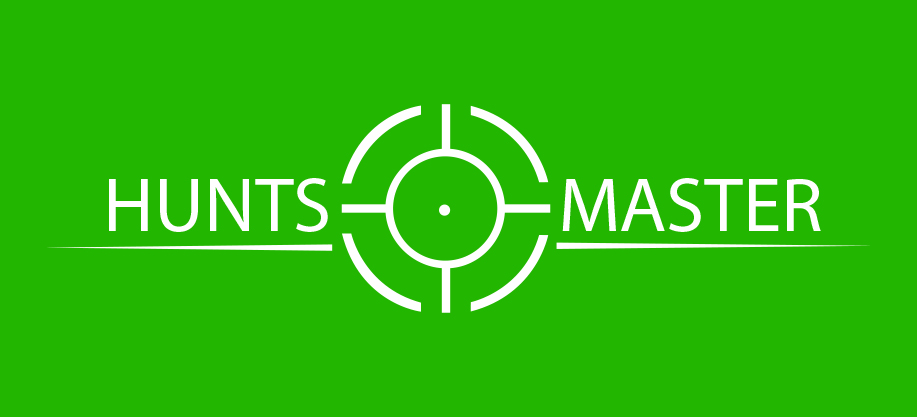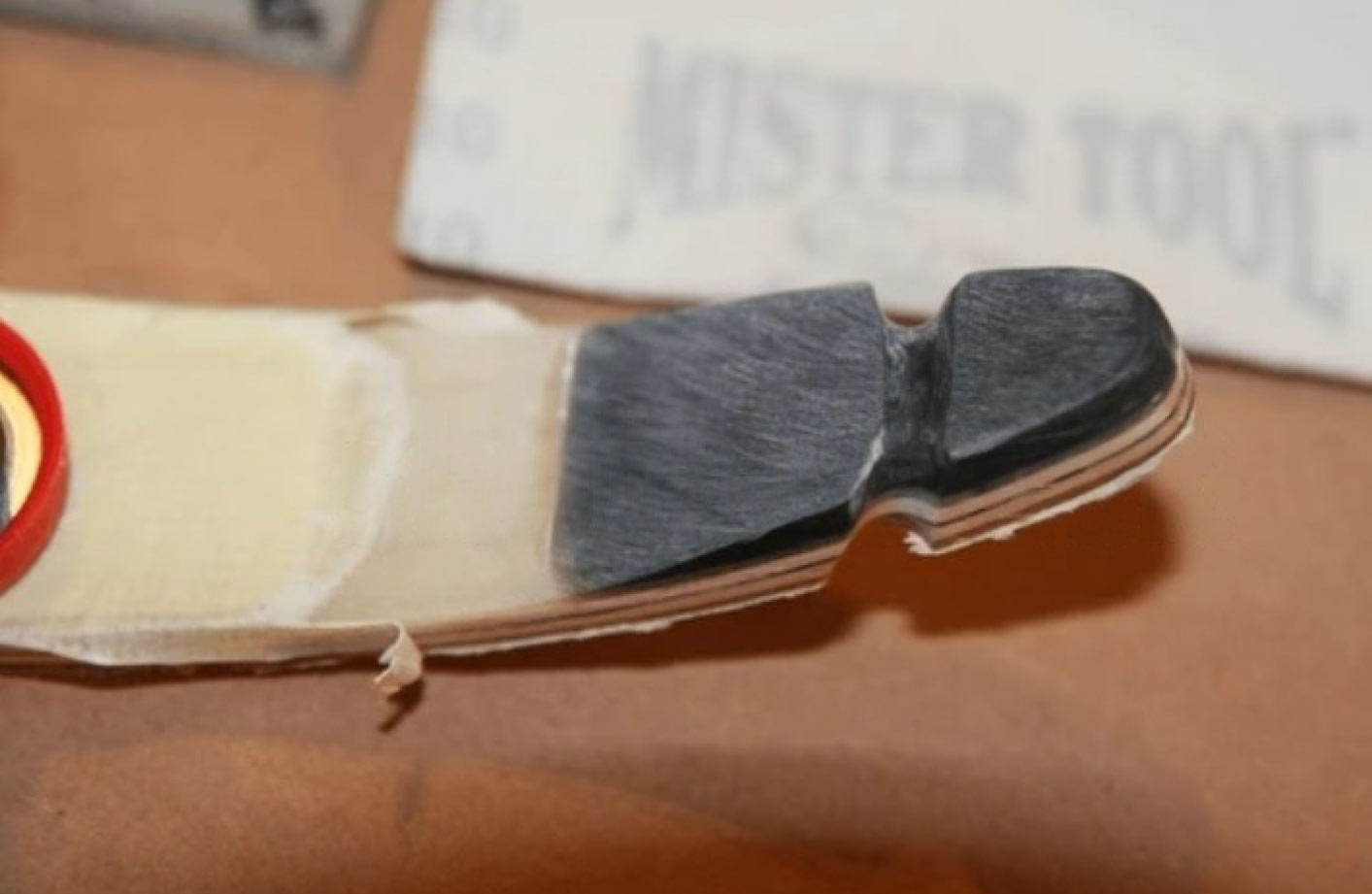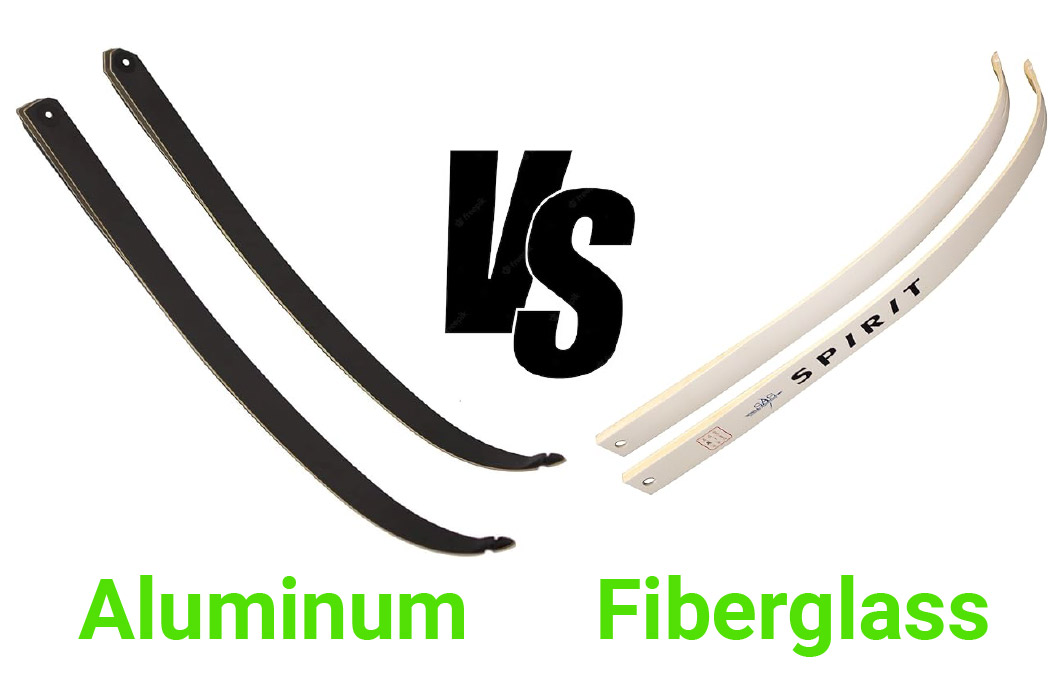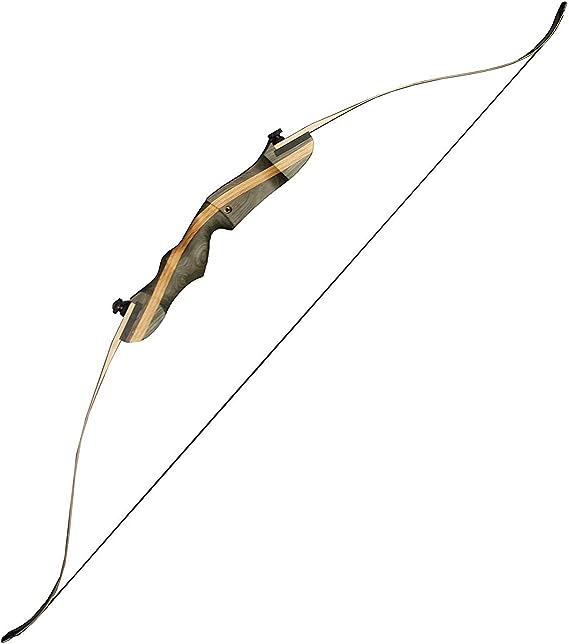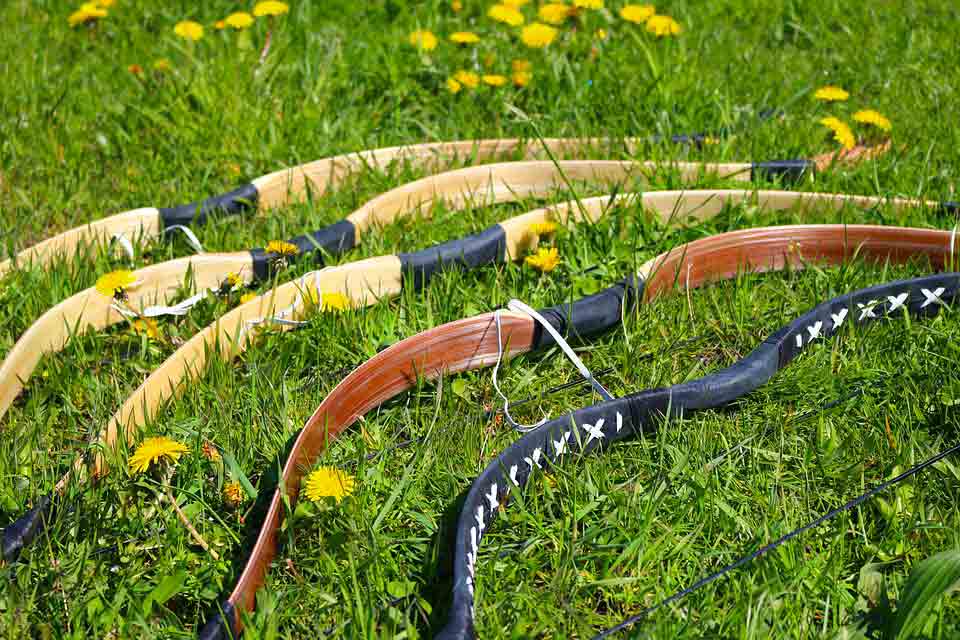
In archery, where accuracy meets passion and talent meets flair, choosing a weapon is a way of life, a heritage, and a way of thinking. Today, archers face the age-old question: one-piece or takedown recurve bow?
Imagine the sun-dappled forests, earthy aroma, and arrow quiver on your back. Take aim, and the world narrows to one instant of perfect focus. Your bow extends you and connects purpose to reality.
However, your bow might make all the difference in this ancient sport. Do you want a traditional, stable, one-piece recurve bow? Or do you like a takedown bow’s flexibility to meet your every need?
Come explore the worlds of archery and science as we explore stability, portability, customization, simplicity of use, and accuracy.
By this point, you’ll understand one-piece vs. takedown bows and choose the one that suits your archery goals.
What is a Recurve Bow?


When the bow is not strung, the limbs of a recurve bow turn away from the shooter. This makes it possible for each shot to have more power and speed, giving shooters an edge in terms of accuracy and range. There are two main types of recurve bows: one-piece and takedown.
Most one-piece recurve bows are made from a single piece of wood or a hybrid material. This makes them strong, but it also makes them harder to customize. Takedown recurve bows have limbs that can be taken off.
This makes them easier to move and gives you more ways to customize them by using different-sized and different-made limbs. If you want, you can easily make a recurve bow at home.
The decision between a one-piece recurve bow and a takedown recurve bow comes down to personal taste and what the bow will be used for. Many shooters talk about the pros and cons of each site for archery.
Parts of a Recurve Bow
The riser is the central part of a recurve bow that holds together all the other parts of the bow. Limbs are the flexible parts on either side of the riser that store and release energy to propel arrows forward.
And string connects both ends of limbs to transfer force from pulling back the arrow to releasing it. Archers need to understand these basic components before choosing their preferred type of recurve bow.
Advantages of a One-Piece Recurve Bow:
- More stable and easier for beginners
- Fewer moving parts mean less maintenance is required.
Advantages of the Takedown Recurve Bow:
- Can be disassembled for easy transport.
- Allows archers to switch out limbs for different draw weights or lengths.
No matter which type you choose, understanding the different parts will help you select a recurve bow that fits your needs and preferences in archery.
What is a One-piece Recurve Bow?


A one-piece recurve bow is a traditional style of bow that has a single, solid piece for the riser and limbs. Its design provides excellent performance in target shooting or hunting games.
One-piece bows are simpler in construction than takedown bows, which allows them to offer greater accuracy and stability during their use.
Although they have some advantages over takedown bows, one-piece recurve bows may not be as versatile due to their fixed length.
This can make it difficult for archers who need a variety of draw lengths to use this type of bow effectively.
Replacing parts on a one-piece recurve bow can be more challenging since each part must fit together perfectly with the rest of the components already attached to it.
Pros and cons
Using a one-piece recurve bow provides some clear advantages, including:
- Simplicity and reliability due to the lack of moving parts
- Increased stability and accuracy from the rigid design
However, there are also limitations to consider with one-piece bows:
- Difficulty with transportation due to their size and shape
- Limited options for customization compared to takedown bows
When deciding between a takedown bow and a one-piece bow, it’s important to weigh the benefits and drawbacks.
Benefits of takedown bows include:
- Flexibility for adjustments or upgrades
- Easier transportation since you can disassemble them into smaller pieces.
Drawbacks may include:
- Less stability in comparison because of more joint areas.
- complexity, which could lead to more maintenance issues.
What is a Takedown Recurve Bow?
A takedown recurve bow is a type of bow that can be easily disassembled into smaller pieces for easier transportation and storage. It consists of three parts: the riser (handle), limbs (upper and lower portions), and string.
Unlike one-piece recurve bows, takedown recurve bows allow archers to swap out different types of limbs with varying draw weights, which makes them a popular choice among archery enthusiasts who want flexibility in their equipment.
While there are certainly advantages to using a takedown recurve bow, such as adjustability and portability, there are also some drawbacks to consider.
For example, they tend to be more expensive than traditional one-piece bows because of their modular design. Some archers argue that the joints between the limbs and riser can cause slight vibrations during shooting, which could affect accuracy.
Pros and Cons: One piece VS Takedown Recurve Bow
When deciding between a one-piece and takedown recurve bow, there are several factors to consider. Here are some of the advantages and disadvantages of each:
One-Piece Recurve Bows:
Pros:
- More traditional look
- No assembly is required.
- Potentially more durable due to the lack of detachable parts
Cons:
- Less portable
- May not be adjustable for draw weight or length.
- Difficult to upgrade or replace certain parts.
Takedown Recurve Bows:
Pros:
- Easy to transport and store in pieces
- Adjustable draw weight and length options
- Easier to upgrade or replace parts
Cons:
- Potential for loosening at the attachment points over time
- Additional assembly steps are required before use.
- Generally less visually appealing compared to one-piece bows.
When choosing between a one-piece or takedown recurve bow, personal preference will play a major role. Consider your specific needs as an archery enthusiast, such as how often you’ll be transporting your equipment or whether adjustability is important.
One Piece vs Takedown Recurve Bow
When it comes to choosing between a one-piece and takedown recurve bow, there are some key differences to consider. One-piece bows are often more affordable but lack the portability of takedown bows.
Takedown bows allow for customization with interchangeable limbs, making it easier to find the perfect fit for your shooting style. However, one-piece bows can be easier to use and may offer better accuracy due to their single-piece construction.
Ultimately, whether you choose a one-piece or takedown recurve bow will depend on your personal preferences and needs as an archer.
It’s important to weigh the pros and cons of each option before making a decision that fits your budget, lifestyle, and skill level.
Price
When it comes to price, one-piece recurve bows tend to be more expensive than takedown recurve bows due to their construction. Takedown recurve bows have a lower upfront cost but may require additional components in the future.
It’s important to consider your budget and long-term goals when deciding which type of bow to purchase. Don’t forget that investing in a higher-quality bow now can save you money in the long run by reducing the need for upgrades or replacements later on.
Portability
Takedown recurve bows are a great option for archers who need to transport their bow frequently. These bows can be easily disassembled and stored in smaller cases or backpacks, making them more convenient to carry around.
On the other hand, one-piece recurve bows are typically larger and may require a separate case for transportation.
When deciding between these two options, it’s important to consider how often you will need to transport your bow. If you plan on traveling with your bow frequently, a takedown recurve is likely the better choice for you.
Customization
Takedown recurve bows are a popular choice for archers who want to customize their bow’s performance and appearance. These bows allow for easy customization with interchangeable limbs and accessories, making it simple to adjust your bow as your needs change.
On the other hand, one-piece recurve bows have a single-piece construction that limits their customization options. However, some manufacturers offer custom options at higher costs.
If you’re considering which type of recurve bow is right for you, it’s essential to consider the level of customization you desire. Here are some things to keep in mind:
Takedown Recurve Bow:
1. Allow easy interchangeability of limbs.
2. Offer various accessory attachments
One-Piece Recurve Bow:
1. Limited customization due to its one-piece construction.
2. Some manufacturers may offer custom options at an additional cost.
Ease of Use
One-piece recurve bows have a simpler design with fewer parts involved, making them generally easier to set up and use. On the other hand, takedown recurve bows require assembly every time they’re taken down, which can take time if not done regularly.
When choosing between one-piece versus takedown recurve bows, it’s important to consider how comfortable you are with assembling and disassembling your equipment.
To help you understand the ease of use when comparing one-piece and takedown recurve bows, here are some key points to keep in mind:
- One-piece recurve bows have a simpler design with fewer parts.
- Takedown recurve bows require assembly every time they’re taken down.
- Assembling and disassembling a bow takes practice and patience.
- Consider whether you would prefer a quick setup or more customization options.
Accuracy
When it comes to accuracy, the type of recurve bow you choose can make a difference. One-piece recurve bows are known for their consistent shot performance due to their lack of moving parts that could potentially become loose over time.
On the other hand, takedown recurve bows have comparable accuracy but may experience slight deviations in shot consistency because of the possibility of loose parts.
Before making a decision between one-piece and takedown models, consider your priorities for precision and how much maintenance you’re willing to put into your equipment.
Conclusion
Personal preference and unique needs play a significant role in the choice between a one-piece and takedown recurve bow. Both types of bows have their own unique advantages that should be considered before making a final choice.
It’s important to remember that you can always switch from one type of bow to another as your archery skills develop, so don’t worry too much about making the “perfect” choice right away.
Recurve Bow One Piece vs. Takedown Bows: Your Comprehensive FAQ Guide
What is the main difference between a recurve bow, One Piece, and a takedown bow?
Briefly explain the fundamental distinction between these two types of recurve bows.
Is one type of bow better for beginners than another?
Address whether a recurve bow, a one-piece bow, or a takedown bow is more suitable for novice archers.
Can I interchange the limbs on a takedown bow like I can with a recurve bow like One Piece?
Explain whether takedown bows offer the same limb interchangeability as recurve bows.
What are the advantages of a recurve bow?
List and describe the specific benefits of using a one-piece recurve bow.
What are the advantages of a takedown bow?
Enumerate the advantages of opting for a takedown recurve bow.
Which type of bow is more convenient for transportation and storage?
Discuss the portability and storage aspects of both bow types.
Are there any performance differences between the two types of bows?
Analyze whether one type of bow offers better performance, accuracy, or consistency than the other.
Do recurve One Piece bows require more maintenance compared to takedown bows?
Clarify whether one type of bow demands more maintenance or care.
Can I customize a recurve bow like the One Piece or a takedown bow to suit my preferences?
Explain the extent to which each bow type can be customized to meet an archer’s specific needs.
What are the cost differences between the two types of bows?
Provide insights into the price range and factors that influence the cost of recurve bows, one-bow, and takedown bows.
Can you recommend specific recurve bow, One Piece and takedown bow models for different skill levels?
Provide recommendations for both types of bows based on an archer’s skill level.
Is it possible to switch from one type of recurve bow to another if my preferences change over time?
Address whether transitioning from a recurve bow One Piece to a takedown bow (or vice versa) is feasible and common among archers.
What safety precautions should I be aware of when using either type of bow?
Highlight important safety tips and considerations for users of recurve bows, One bows, and takedown bows.
